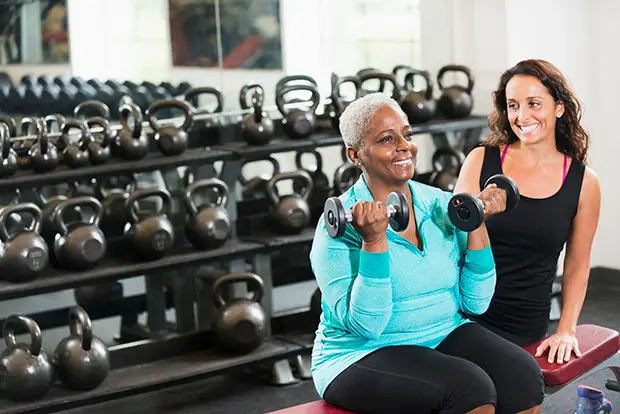
Submitted by Shannon Laesch, APN, and Elizabeth Madlem, APN, the Bone Health Clinic at Millennium Pain Center
Bone health is critically important to our overall health and quality of life. Healthy bones provide the body with a frame that allows for mobility and for protection against injury. Bones serve as a storehouse for minerals that are vital to the functioning of many other life-sustaining systems in the body. Unhealthy bones, however, perform poorly in executing these functions and can lead to debilitating fractures.
The bone-health status of Americans is of great concern. Osteoporosis, a condition where the bones become brittle and fragile, is considered to be a global public-health problem that is estimated to affect over half of all Americans over age 50. This number will increase as the population ages. Bones affected by osteoporosis may become so fragile that fractures occur spontaneously or as the result of minor bumps, falls, or normal stresses and strains such as bending, lifting, or even coughing. While osteoporosis or low bone density do not directly cause death, a fracture or collapsed vertebrae often leads to a downward spiral in physical and mental health that ultimately results in death.
Fortunately, osteoporosis is largely preventable by leading a healthy lifestyle that includes proper nutrition and exercise. Last month we discussed the role of calcium in preventing osteoporosis. Exercise is also extremely important for treating and preventing osteoporosis. Not only does exercise improve your bone health, it also increases muscle strength, coordination, and balance, which in turn helps to prevent falls and related fractures.
Like muscle, bone is living tissue that responds to exercise by becoming stronger. Young women and men who exercise regularly generally achieve greater peak bone mass (maximum bone density and strength) than those who do not. For most people, bone mass peaks during their 30s. After that time, we can begin to lose bone.
The best exercise for your bones is the weight-bearing kind, which forces you to work against gravity. Some examples of weight-bearing exercises include weight training, walking, hiking, jogging, climbing stairs, tennis, and dancing. Examples of exercises that are not weight-bearing include swimming and bicycling. Although these activities help build and maintain strong muscles and have excellent cardiovascular benefits, they are not the best way to exercise your bones. The goal is at least 30 minutes of physical activity every day.
If you have health problems — such as heart trouble, high blood pressure, diabetes, or obesity — or if you are age 40 or older, check with your doctor before you begin a regular exercise program. Listen to your body. When starting an exercise routine, you may have some muscle soreness and discomfort at the beginning, but this should not be painful or last more than 48 hours. If it does, you may be working too hard and need to ease up.
If you have osteoporosis, ask your doctor or bone health specialist which activities are safe for you. If you have low bone mass, experts recommend that you protect your spine by avoiding exercises or activities that flex, bend, or twist it. Furthermore, you should avoid high-impact exercise to lower the risk of breaking a bone. It is a good idea to consult with an exercise specialist to learn the proper progression of activity, how to stretch and strengthen muscles safely, and how to correct poor posture habits.
Exercise is only one part of an osteoporosis prevention or treatment program. Like a diet rich in calcium and vitamin D, exercise helps strengthen bones at any age. But proper exercise and diet may not be enough to stop bone loss caused by medical conditions, menopause, or lifestyle choices such as tobacco use and excessive alcohol consumption. Even though bone disease often strikes late in life, the importance of beginning prevention at a young age and continuing it throughout life is now well understood.
With respect to diagnosis, the development of noninvasive tools to measure bone density and bone mass has been one of the most significant advances in the last quarter-century. As a result, it is now possible to detect bone disease early and to identify those at highest risk of fracture. The biggest problem is that there is a lack of awareness about bone disease. It is often called a “silent disease” because it usually progresses without any symptoms until a fracture occurs or one or more vertebrae collapse. It is important to speak with your doctor about your bone health.
For more information on osteoporosis or to schedule a bone density screening, you may contact The Bone Health Clinic at Millennium Pain Center, 309-662-4321. They are located at 1015 Mercer Ave. in Bloomington. Shannon Laesch and Elizabeth Madlem are certified bone health consultants. The clinic provides screening, diagnosis, and a comprehensive treatment plan for people who have or are at risk of developing osteoporosis.
Photo credit: Susan Chiang/iStock

